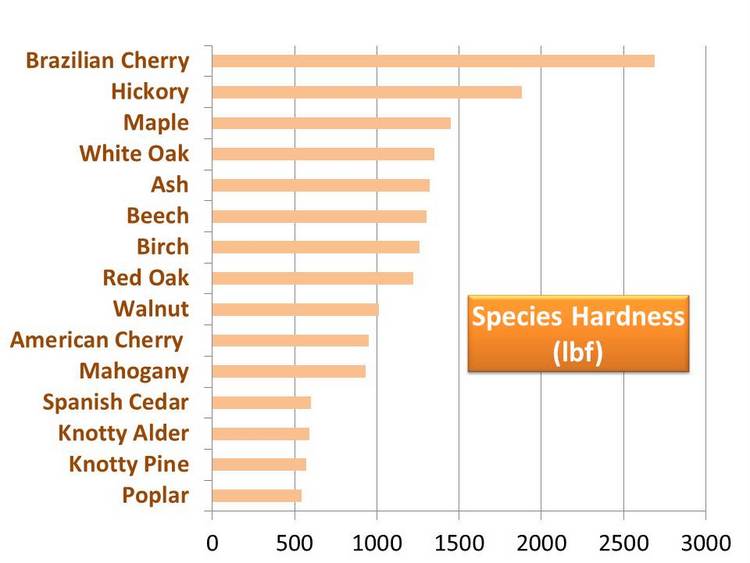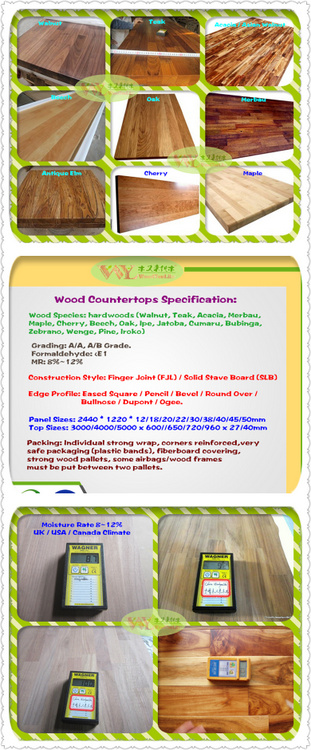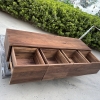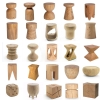1.Hardness:
Hardness is an essential parameter that determines the durability and resistance of solid wood. It refers to the wood's ability to withstand indentation and wear. Hardness is typically measured using the Janka hardness test, which involves measuring the force required to embed a steel ball halfway into the wood's surface. Examples of wood species with varying hardness levels include:
a) Brazilian Walnut (Ipe): Known for its exceptional hardness, Brazilian Walnut ranks among the hardest woods in the world. It possesses a Janka hardness rating of around 3,684 pounds-force (lbf), making it highly resistant to scratches and dents.
b) Douglas Fir: As a relatively softer wood, Douglas Fir exhibits a Janka hardness rating of approximately 660 lbf. While it may not be as hard as some other species, it still offers sufficient durability for various applications.


2.Humidity:
Wood is hygroscopic, meaning it can absorb or release moisture depending on its surrounding environment. This property makes humidity a critical parameter to consider when using solid wood. Understanding how wood reacts to humidity changes is crucial to prevent warping, splitting, or buckling. Examples of how different wood species respond to humidity include:
a) Oak: Oak is known for its stability and resistance to moisture changes. It has a low shrinkage coefficient, making it less susceptible to warping or distortion when exposed to varying humidity levels.
b) Pine: Pine is a softwood species that is more prone to dimensional changes with humidity fluctuations. It has a higher shrinkage coefficient compared to hardwoods like oak. Proper sealing or finishing techniques can help minimize its response to moisture changes.


Price Comparison: Exploring Cost Factors
The price of solid wood is influenced by several factors:
Wood Species: Different wood species have varying availability, growth rates, and unique properties that influence their price. Exotic woods such as mahogany or ebony tend to be more expensive due to limited supply and desirable characteristics.
Sustainability: Sustainable sourcing and certifications like the Forest Stewardship Council (FSC) can affect the price of wood products. Environmentally responsible practices often result in higher costs.
Processing and Finishing: Additional processing, such as milling, shaping, or applying finishes, can increase the price of solid wood products.


 中文
中文 English
English Français
Français Deutsch
Deutsch Português
Português 日本語
日本語 한국어
한국어



